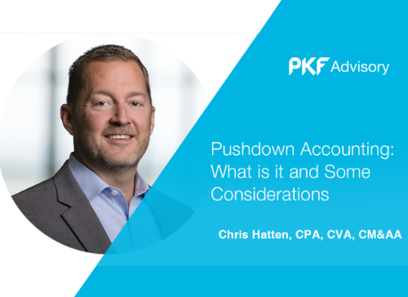Future-Proof Your Service: Secret Cybersecurity Forecasts You Need to Know
As organizations face the speeding up pace of electronic transformation, comprehending the advancing landscape of cybersecurity is essential for lasting strength. Predictions recommend a significant uptick in AI-driven cyber dangers, alongside enhanced governing scrutiny and the crucial change towards Absolutely no Depend on Architecture.
Surge of AI-Driven Cyber Risks

One of the most concerning growths is the use of AI in producing deepfakes and phishing schemes that are extremely convincing. Cybercriminals can produce sound and video web content, impersonating execs or trusted individuals, to manipulate victims into divulging sensitive details or authorizing deceptive transactions. In addition, AI-driven malware can adjust in real-time to escape detection by typical security measures.
Organizations should acknowledge the urgent demand to reinforce their cybersecurity frameworks to deal with these progressing dangers. This consists of investing in sophisticated risk detection systems, promoting a culture of cybersecurity awareness, and applying durable incident action strategies. As the landscape of cyber risks changes, proactive measures end up being essential for securing delicate information and keeping company honesty in a progressively electronic world.
Raised Concentrate On Information Personal Privacy
How can organizations efficiently browse the growing focus on information personal privacy in today's digital landscape? As regulative frameworks evolve and customer expectations rise, organizations have to prioritize durable data privacy methods.
Buying employee training is vital, as team awareness straight affects data defense. Organizations should foster a society of personal privacy, urging staff members to understand the significance of guarding sensitive info. In addition, leveraging modern technology to boost information safety is crucial. Carrying out innovative file encryption techniques and secure information storage solutions can dramatically alleviate risks connected with unauthorized gain access to.
Collaboration with legal and IT groups is vital to line up data personal privacy initiatives with business objectives. Organizations should also engage with stakeholders, including customers, to communicate their commitment to information privacy transparently. By proactively resolving information privacy concerns, services can build trust fund and boost their online reputation, inevitably adding to long-term success in a significantly scrutinized electronic setting.
The Shift to Absolutely No Trust Style
In feedback to the developing threat landscape, organizations are increasingly adopting Absolutely no Trust fund Style (ZTA) as a basic cybersecurity method. This approach is based on the concept of "never ever trust, constantly confirm," which mandates continual verification of user identifications, devices, and information, no matter their area within or outside the network boundary.
Transitioning to ZTA includes implementing identity and accessibility management (IAM) options, micro-segmentation, and least-privilege access controls. By granularly managing accessibility to resources, organizations can alleviate the danger of insider hazards and minimize the effect of external breaches. ZTA encompasses robust monitoring and analytics abilities, allowing companies to detect and respond to anomalies in real-time.

The change to ZTA is also fueled by the increasing adoption of cloud solutions and remote job, which have actually expanded the assault surface area (cyber resilience). Traditional perimeter-based protection versions want in this brand-new landscape, making ZTA a much more resistant and adaptive framework
As cyber hazards remain to expand in elegance, the adoption of No Depend on principles will certainly be crucial for organizations seeking to secure their assets and preserve regulative compliance while ensuring business connection in an unsure atmosphere.
Regulatory Changes imminent

Future laws are anticipated to deal with a series of problems, consisting of data privacy, violation notification, and event action protocols. The General Data Security cyber resilience Regulation (GDPR) in Europe has actually established a precedent, and similar frameworks are emerging in other regions, such as the United States with the proposed government privacy regulations. These regulations commonly impose strict fines for non-compliance, emphasizing the demand for organizations to prioritize their cybersecurity procedures.
Additionally, sectors such as money, healthcare, and important infrastructure are likely to encounter a lot more stringent requirements, mirroring the delicate nature of the information they manage. Conformity will certainly not simply be a lawful responsibility however a crucial part of building depend on with clients and stakeholders. Organizations should stay ahead of these changes, incorporating regulatory demands right into their cybersecurity strategies to make certain resilience and safeguard their properties properly.
Relevance of Cybersecurity Training
Why is cybersecurity training a crucial component of an organization's protection method? In a period where cyber hazards are significantly advanced, organizations need to identify that their staff members are typically the first line of defense. Effective cybersecurity training gears up team with the understanding to recognize prospective threats, such as phishing attacks, malware, and social engineering tactics.
By promoting a society of security awareness, companies can substantially lower the risk of human mistake, which is a leading root cause of data violations. Normal training sessions ensure that workers remain notified about the most up to date dangers and best practices, thereby boosting their capacity to respond suitably to cases.
Additionally, cybersecurity training promotes compliance with governing requirements, minimizing the risk of legal consequences and economic charges. It additionally empowers workers to take ownership of their duty in the organization's safety and security framework, leading to an aggressive as opposed to reactive technique to cybersecurity.
Verdict
In conclusion, the progressing landscape of cybersecurity demands proactive measures to attend to arising dangers. The rise of AI-driven assaults, combined with heightened data personal privacy issues and the shift to Zero Count on Architecture, requires a comprehensive approach to safety and security. Organizations should stay watchful in adapting to regulative adjustments while focusing on cybersecurity training for workers (cyber attacks). Highlighting these approaches will certainly not only enhance business resilience however also secure sensitive details against an increasingly sophisticated range of cyber hazards.